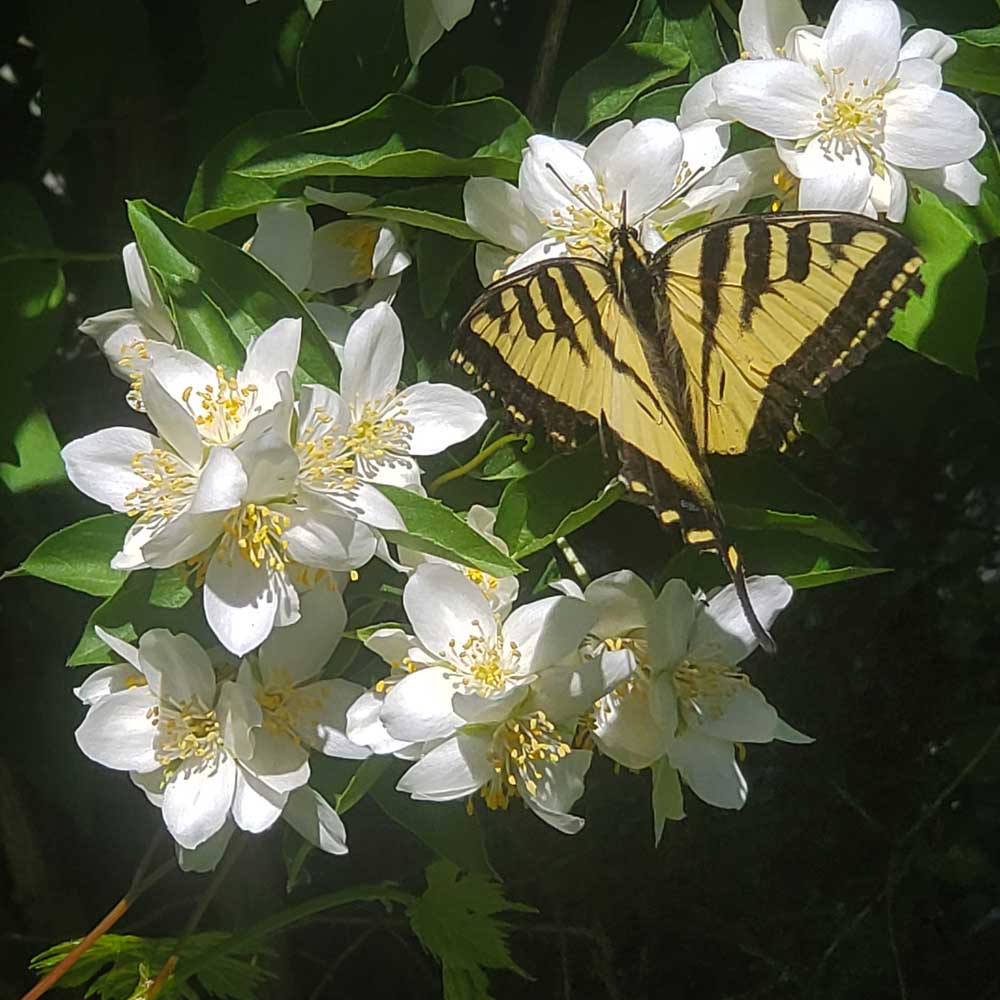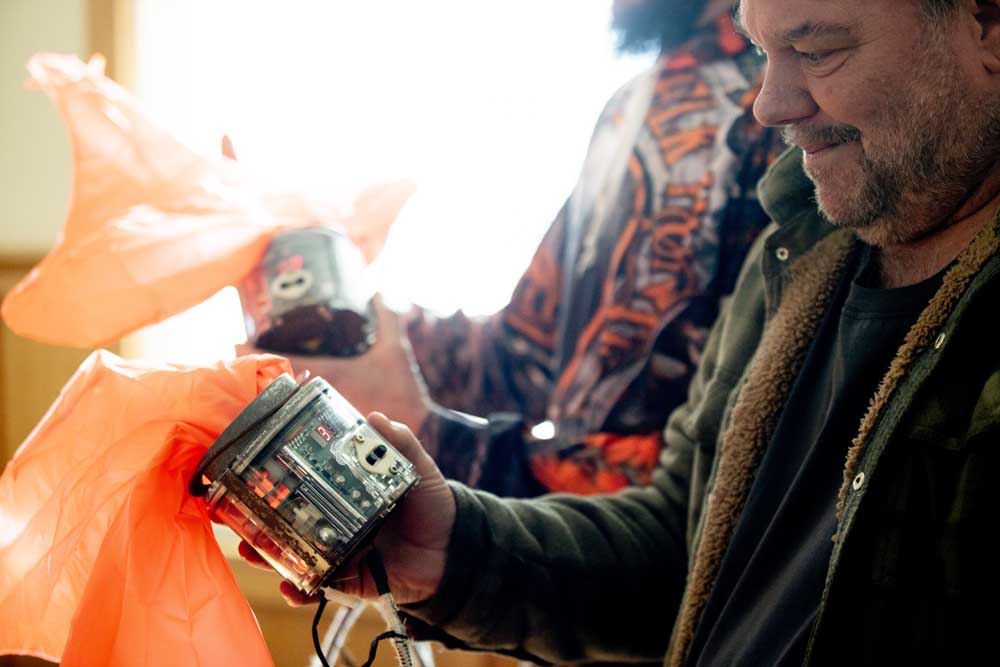Guest column: Flying flowers: Tiger swallowtails in abundance this year
Published 6:49 am Monday, August 14, 2023

- A western tiger swallowtail checks out a cluster of mock orange flowers.
In 2023, many areas in Washington experienced large numbers of big yellow butterflies flying across meadows and roads. I observed it myself and had several people mention this unusual phenomenon. What happened? Most of these were western tiger swallowtails, Papilio rutulus, (one of seven swallowtail species in Washington according to the Washington Butterfly Association). A particular set of climate and plant-host circumstances made this happen.
Trending
Did you know that larval butterflies are so closely tied to certain plants, species by species, that they are like flying flowers? Their zoological category is Lepidoptera, which includes moths and butterflies. Butterflies feature colored scales on their wings and bodies, and short adult life spans. According to NWButterflies.com, we have 155 recorded butterfly species in our state. A few migrate, but most are local and overwinter. They are grouped in smaller categories with lovely names such as, fritillary, brush foot, copper, hair streak, blue, sulphur, skipper, nymphs, and whites.
Butterflies have complex and interesting life histories. Many species overwinter as adults, and the adults that overwinter are just emerging from their pupae. These will hibernate as adults in hollow trees, woodpiles, woodpecker cavities and other nooks and crannies. They come out in the spring to mate and lay eggs. The larvae grow and pupate in the summer and some emerge as adults in late summer and autumn. Other species overwinter as larvae. These larvae come out of suspended animation in the spring and if conditions are good will grow, pupate and emerge in late spring or summer as adults. So butterflies have 4 ways of spending the winter.
Butterflies are uniquely and beautifully marked, and fly slowly and gracefully in obvious shows. They have ephemeral life spans as adults, usually living for only a few weeks. Adult butterflies display and court in their mysterious insect ways, try to survive predation, and the females lay eggs on particular host plants before succumbing. The eggs hatch in spring and the caterpillars voraciously feed for their appointed time, shedding skins multiple times until finally hanging upside down somewhere, and going into the miraculous pupal transformation. Caterpillars, by the way, are very important food for many birds. Populations persist season to season, as overwintering pupae or hiding adults in their respective habitat niches. It is an amazing set of life histories!
Trending
The Sequim Gazette recently published a piece on these beautiful animals, noting this year’s high abundance of Western tiger swallowtails. See www.sequimgazette.com/life/our-colorfully-winged-neighbors.
In the spring of 2023, a confluence of conditions produced a prolific hatch of swallowtails.
Swooping across openings in the forest, they were often seen flying along roads and being squished in our car grills.
It was occasionally spectacular, with dozens of grand yellow butterflies in the air at once.
Swallowtails (and other species) sometimes engage in a behavior called “puddling” where they will congregate and sip liquid from pooled water, sometimes in the road or on the edge, to gather nutrients.
Males apparently do this more commonly than females.
Adult swallowtails, and other butterflies, will “nectar” (as a verb) on a variety of plants. They use their special siphon-like mouthparts to sip the sweet juice out of flowers.
Many plants can serve this function.
According to the seminal book, “Butterflies of Cascadia” by Grays River resident Robert Michael Pyle, one of the least useful habitats for butterflies are conifer forests!
Makes sense. No flowers, sticky stems, dark and cool, etc.
Butterflies are usually tied to sunny, open habitats with abundant flowers and various host plants.
Methods to support butterflies include planting pollinator mixes, maintain flowering shrubs, avoiding use of pesticides (particularly neonicotinoids) and keeping and restoring meadows.
One interesting Northwest business helping promote and create these habitats is northwestmeadowscapes.com, which is based in Port Townsend and applying expertise to native plant diversity and habitat for butterflies and pollinators.
Butterflies are beautiful and fascinating creatures, with complex life histories greatly influenced by what we do on the land.
They are one of many reasons for maintaining and creating habitat diversity!









